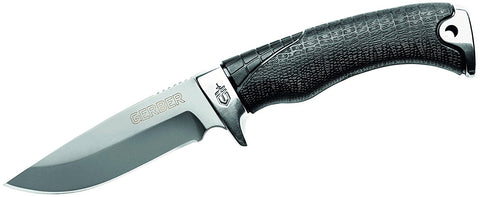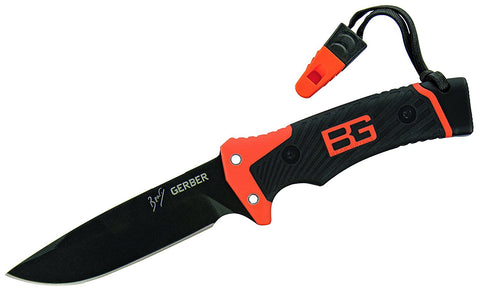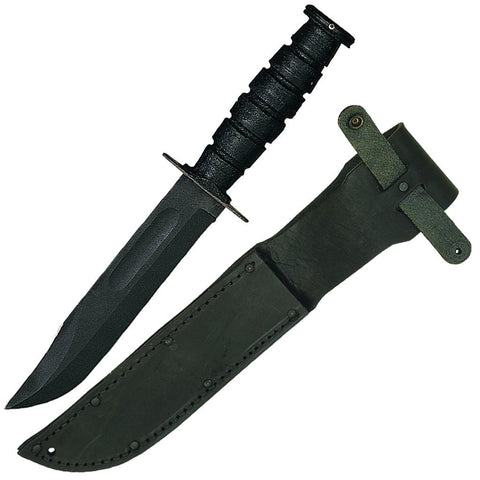I can barely recall my first kiss, it might have been at a high school disco, but I don’t remember who with. I’m a bit vague as to what I did at my first day of work. Most of what I learnt at school is a distance memory, don’t ask me what themes Romeo and Juliet examines. However, I can tell you exactly where, what I was wearing and who I was with when I got my first survival knife, which was well over 20 years ago now. Recalling the memory brings back some very fond childhood memories with my dad, which I hope someday to recreate with my own son. My first knife was an old sheath knife with an antler horn handle, it was a bit rusty and wasn’t particularly sharp, but it signified that I was to be trusted with a potentially dangerous tool and satisfied some very primal urges. My long love of knives began at this time and I’ve extended my collection significantly since then.
In spite of our advancements in medicine, travel, technology and communications, millions of people around the world are thrust into disaster situations and are at the mercy of the elements or assistance from strangers. Additionally, thousands of people globally accidentally find themselves in a unexpected random life and death situations where the difference between life and death can depend on a little knowledge and the tools and resources available. So what? It is prudent, whenever possible, to keep irreplaceable survival tools close at hand just in case the unthinkable happens. Possibly the most important tool you can have is a quality survival knife. No other tool or piece of equipment can replace the survival knife, it’s proved itself throughout history as a must have piece of kit. Since modern man started making its way out of Africa, we have always relied on some sort of cutting tool to meet our most basic survival needs: shelter, fire, food and water. Over thousands of years the cutting tools have developed from simple stone tools into beautifully engineered survival knives. However, it should be noted that not all survival knives are created equally.
I’m fortunate enough to have the opportunity to try out many types of survival knives at BladesPro on an everyday basis. I can even take a selection with me when my partner and I go for a day or weekend into the wilderness. However, I realise this is not possible for most people. At the very least, a survival knife should be available when you’re likely to need it most i.e. when you’re out and about in the wilderness. The more often you have it with you, the more often you’ll likely find a use for it, even if it’s not a survival situation. I always have one in my car as who knows when you might need to cut your seat belt or smash a window. So regardless if you’re backpacking, fishing, hunting, skiing, hiking, boating or camping, a good knife is a trusted irreplaceable companion. I’m rarely if ever out and about without one.
Survival knives are as the name implies, knives that help you to survive. A well made survival knife can have hundreds of uses, including:
- Cutting/Slicing
- Splitting
- Signaling
- Shelter Building
- Self-Defense
- Prying Tool
- Make-Shift Screwdriver
- Hunting Weapon
- Hammering
- Food Prep
- First Aid Tool
- Fire Making
- Digging
When it comes to buying a knife, not just a survival knife, buying something well built and functional is far more worthwhile than a knife with lots of bells and whistles. Leave the survival knives with 100 accessories for the films and buy something which is well designed and built to last. Function out performs aesthetics. Your number one priority is how the knife performs, which in itself depends on a variety of time tested key features.
The Six Defining Features of a Survival Knife
Size
Despite what you might have been told, size does indeed matter. However, bigger is not always better. If your blade is too big, you’ll find that your knife is impractical for work which requires precision, such as carving delicate snares sets or preparing small game.
On the other hand, a small knife might not be up to the task of chopping or batoning. Batoning involves striking the back of your knife with another object in order to drive it through stubborn or thick wood. This technique is invaluable if you plan to use the blade for splitting small logs or for cutting through the limbs of trees.
From my own personal experience, I find that a knife between 20 – 30 cm in length is ideal. You should look for something with a 10 – 15 cm blade in order to be effective.
Fixed Blade
A fixed blade survival knife is undeniably more reliable than a standard folding knife. While a good folding survival knife is a great tool to keep in your pocket for everyday use, a fixed blade reigns supreme when it comes to meeting demands of a genuine survival scenario.
Any moving parts of joints represent a potential weakness in a knife. You should wherever possible work to minimise your risk exposure when in a survival situations, you can do this by picking a tool which is better suited to taking the abuse chopping, prying, pounding and cutting will impart on a knife.
Full Tang
Since we’ve established that a survival knife should be fixed blade, we should also establish that a survival knife needs to be full tang. The term full tang means the knife and handle are made from one piece of continuous metal. A grip is normally attached to the handle to improve the comfort and the ability to actually grip the knife. A full tang knife is substantially more robust than an equivalently made partial tang knife such as half tang, push tang or rat tail tang.
A partial tang knife is prone to loosening over time, often developing play in the handle, especially when the knife is subjected to demanding jobs such as chopping, prying or batoning. When a partial tang blade becomes loose, it can be extremely difficult to effectively fix them without specialist tools, it also becomes a liability and can easily catastrophically fail and cause serious injury. In comparison, a full tang knife still functions as a knife even if the handles come loose, it can even be wrapped in paracord or rags in order to create a replacement grip.
I know off no advantage offered by a partial tang knife when compared to a full tang blade, assuming the materials used are identical. It’s very difficult to completely break a single piece of continuous solid metal. It can usually be quite easy to spot a full tang knife, just look for the metal handle to be sandwiched between the knifes scales.
Sharp Pointed Tip
This might be an clear decision for some of our readers, but make sure you pick a survival knife with a sharp point. I’ve seen many so called survival knives with rounded, hooked or angles tips. So despite what you might have been told, there are many good arguments as to why your survival knife should have a sharp pointed tip. The first is its ability to pierce things. Any knife without a sharp tip will not be as effective at piercing thick fur, hide or any other similar material.
As such, a spear pointed knife can by itself be used a hunting weapon, either when lashed to a pole in order to create a spear or by itself. If the scales on your survival knife can be easily removed then the blade of the knife can be more easily seamlessly integrated into a staff to form a spear.
In addition to its piercing abilities, a sharp pointed knife presents several advantages versus any other type of blade tip. Below I’ve compiled a short list of tasks which a sharp pointed knife is especially good at.
- Drilling or notching wood
- Repairing clothes or gear
- Removing splinters
- Detailed picking or prying
- Cleaning and preparing small animals such as fish
- Processing wild edibles
- Accessing bait in otherwise difficult to reach areas
Single Edged Blade
A survival knife should not be sharpened on both sides in the style of a dagger. A double edged blade is rarely if ever preferable over a single edged knife in the vast majority of survival situations. In fact, it can be a real disadvantage.
Not only is it preferential to have a single edged blade, but it’s far superior to have a survival knife with a flat spine, one which has been ground at a 90 degree angle to the blade. A flat spine is perfect for striking a ferro-rod, while a bevelled or rounded spine makes this task almost impossible.
When out in the woods or camping, I will often use my knife to baton through larger pieced of weed. Regardless of whether I’m splitting wood for a fire or constructing a shelter, a knife which was sharpened on both edges would make this task much harder.
With a flat backed knife I can also use my thumb as a rest for increased control when performing tasks that require a high degree of accuracy, such as notching triggers for traps or creating snares. This is not something I would want to attempt with a double edged knife as the risk of injuring myself is greatly increased.
Substantial Pommel
In case you didn’t know, the pommel is the bottom of a knifes handle, and may also be referred to as the butt. I will often use the pommel on my survival knife for some jobs that require a light amount of hammering. It’s great for driving in shelter pegs. I’ve also had circumstances when I’ve been able to use the point of my knife to create a temporary fishing hole in ice by hammering the pommel of my knife with a piece of wood in order to push the tip of the knife into the ice. You might find that some knives are designed with a rounded or hooked pommel, this shape is far from ideal for hammering. If you want to get the maximum amount of use out of your survival knife, opt for one with a substantial well designed pommel.
Bottom Line
Use the criteria laid out above as the groundwork for picking the perfect survival knife. At the end of the day, only you can decide what you really need from your survival knife and what features you can do without. Anything that’s not covered in the criteria above pretty much come down to personal preference.
There are more than a few survival knives out there that cover every one of the six must have features, yet they may be aesthetically different and diverse in their appearance. There are numerous design and style options that effect how the knife looks but also have very little bearing on the survival knives functionality. Some of these features may include:
- Blade Steel (Carbon or Stainless – varying options with varying results)
- Blade Style
- Blood Groove
- Colour or Finish
- Decorative Milling
- Handle Material (Rubber, Micarta, Bone, Antler, etc…)
- Jimping
- Knife Designer/Manufacturer/Brand
- Lanyard Holes
- Serrated or Non-serrated Blade
- Sheath Design and Style
- With or Without Finger Guards
Final Words
A survival knife is just a tool and like any other tool its effectiveness is often dictated by the skills of whoever is wielding it, it’s not a magic wand nor will it automatically save your life. Skills only come with repeated use and practise, even the most talented tradesman, musicians or actors spend years practising their trade to become proficient.
Don’t buy a survival knife just as a piece of decoration, it is a tool that needs and should be used. Modern man has always used cutting blades, they have helped our species evolve and influenced how we shape the world around us. No other tool has had a bigger impact on how we hunted, fought, built or survived in the wilderness. From early humans wandering the plains of Africa to modern soldiers on the battlefield, there is no other relationship like that between a man and his trusty blade. Make sure you pick yours carefully.
source https://www.bladespro.co.uk/blogs/news/the-8-best-survival-knives









No comments:
Post a Comment